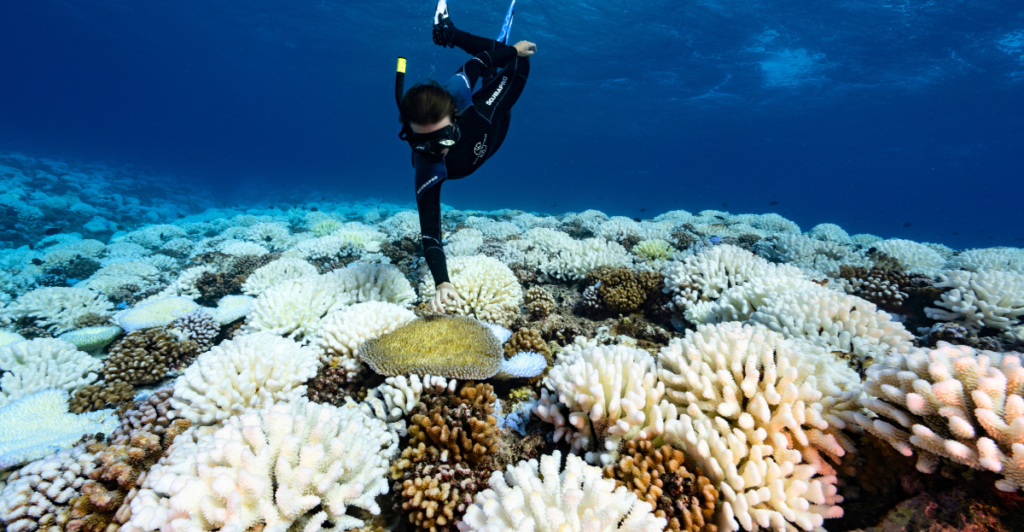
The world’s coral reefs are facing an unprecedented crisis, with 84% of reefs globally ravaged by the most severe bleaching event ever recorded. Declared by the International Coral Reef Initiative (ICRI), this fourth global bleaching event, ongoing since early 2023, has surpassed the 2014-2017 disaster, impacting two-thirds of reefs. Driven by record-breaking ocean temperatures linked to climate change, the bleaching has turned vibrant ecosystems into skeletal graveyards across 82 countries that support 25% of marine species and safeguard coastal communities from storms.
What Is Coral Bleaching?

Coral bleaching happens when stressed corals expel the symbiotic algae (zooxanthellae) living within their tissues, stripping them of color and revealing their white calcium carbonate skeletons. These microscopic algae provide corals with up to 90% of their energy through photosynthesis and are vital to their survival. While bleaching is mainly caused by rising ocean temperatures due to climate change, it can also result from pollution, sedimentation, or extreme low tides.
While bleached corals aren’t immediately dead, they become vulnerable to starvation and disease, with recovery possible only if cooler conditions return swiftly.
Why Are Coral Reefs So Important?
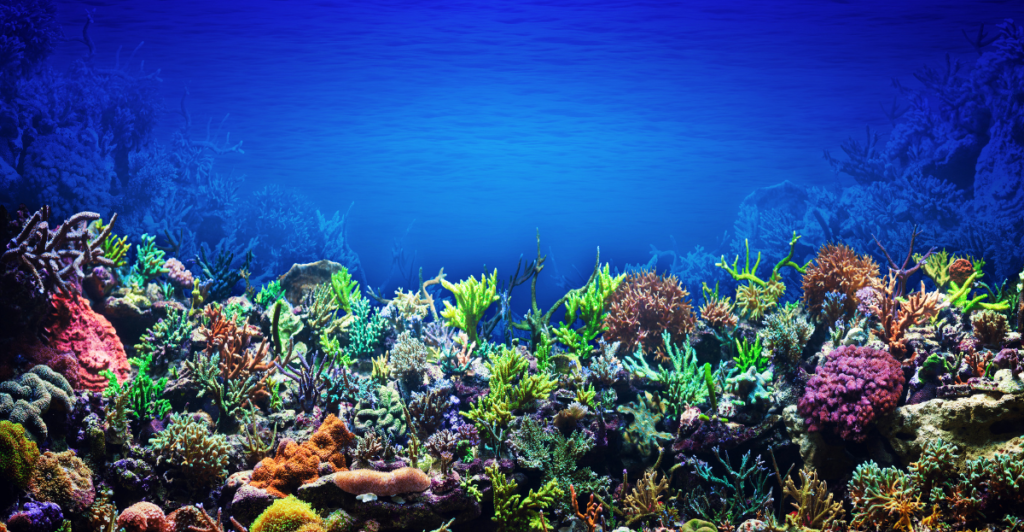
Coral reefs are indispensable to marine biodiversity and human survival. They host 25% of all marine species while covering less than 1% of the ocean floor. These reefs act as nurseries and habitats for over 4,000 fish species and countless other marine organisms. Economically, reefs generate $29.8 billion annually through tourism, coastal protection, and fisheries, with the U.S. alone benefiting from over $100 million in commercial fisheries and billions in tourism.
Their natural breakwaters reduce wave energy by up to 97%, shielding coastal communities from storms, erosion, and flooding—services valued at over $4 billion worldwide. Reefs also contribute to medical breakthroughs, with compounds from reef organisms helping treat cancer, arthritis, and bacterial infections.
The Scale of the Crisis

NOAA’s Coral Reef Watch added three new alert levels to its scale to account for unprecedented heat stress, with Level 5 indicating over 80% mortality risk for entire reef systems. The Atlantic Ocean has suffered especially catastrophic damage, with 99.7% of its tropical reefs exposed to bleaching conditions, while iconic sites like Australia’s Great Barrier Reef saw 80% of outcrops bleached.
“The fact that this most recent, global-scale coral bleaching event is still ongoing takes the world’s reefs into unchartered waters,” said Britta Schaffelke, coordinator of the Global Coral Reef Monitoring Network.
How Coral Bleaching Happens
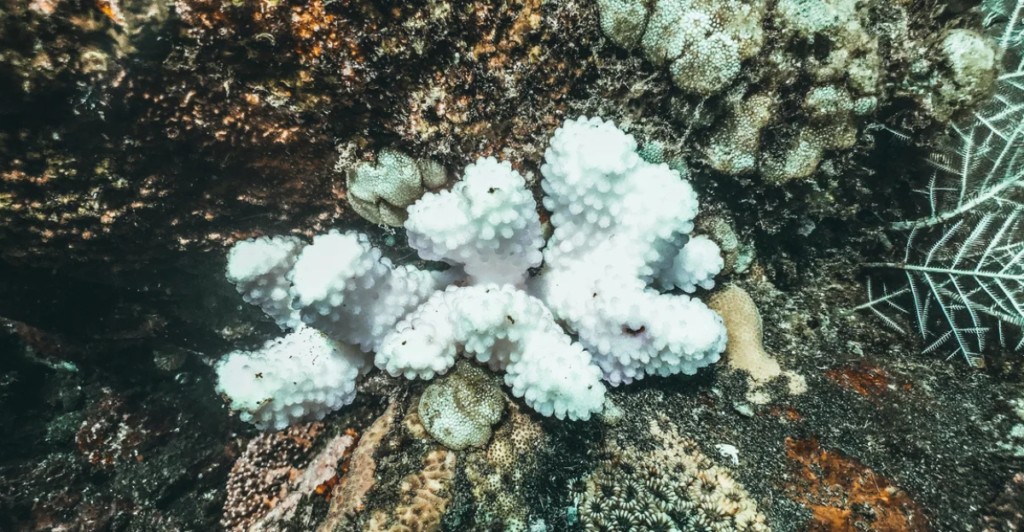
Coral bleaching begins when rising ocean temperatures or other stressors disrupt the symbiotic relationship between corals and their algae. Under heat stress, the algae produce toxic reactive oxygen species, prompting corals to expel them. This expulsion strips corals of their color—revealing white skeletons or, in some cases, vivid “colorful bleaching” hues from protective pigments.
While brief stress may allow recovery if temperatures normalize, prolonged exposure (over 8 weeks) leads to mass mortality as tissues die and skeletal structures erode. “Bleaching is always eerie — as if a silent snowfall has descended on the reef — there is usually an absence of fluttering fish and an absence of the vibrant colors on the reef,” Melanie McField, a Smithsonian scientist who directs a coral monitoring program for the Mesoamerican Reef.
The Influence of Ocean Temperatures

Rising ocean temperatures are the primary driver of coral bleaching, with even 1°C above seasonal norms triggering mass expulsion of vital algae. Corals thrive in waters between 23 °C and 25°C, but prolonged exposure to temperatures exceeding 30.1°C causes irreversible damage, as seen in Thailand’s 2010 event, where 7 weeks above 31°C led to catastrophic die-offs.
NOAA’s bleaching thresholds reveal that 2°C above normal for one month, or 1°C for two months, typically results in mass mortality. Alarmingly, global sea temperatures have risen 0.7°C in 30 years, pushing reefs perilously close to their thermal limits and making frequent bleaching events inevitable without urgent emission cuts.
The Impact on The Great Barrier Reef
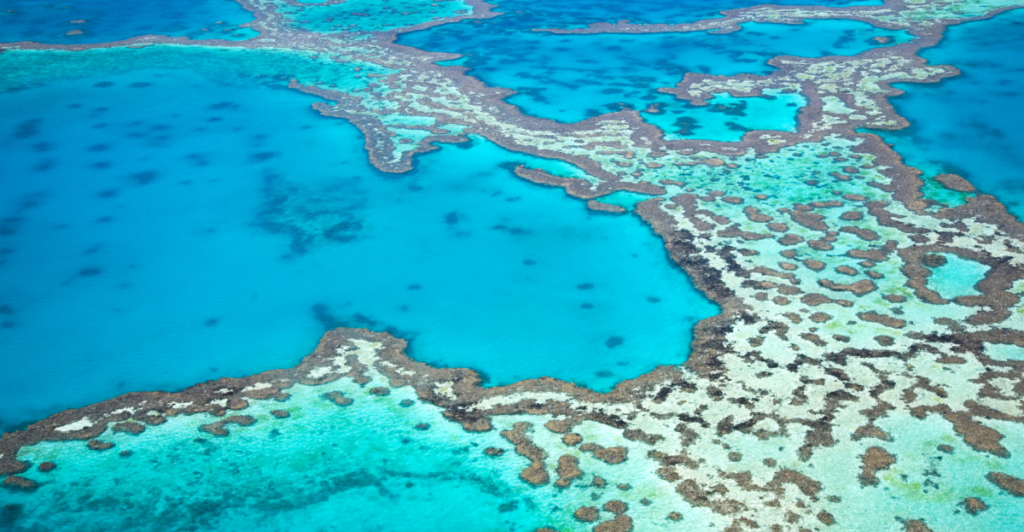
The Great Barrier Reef has suffered five mass bleaching events in eight years, with the 2024 event emerging as the most widespread and destructive on record. Aerial surveys revealed that 73% of surveyed reefs in the Marine Park exhibited prevalent bleaching (over 10% of coral cover bleached), while extreme bleaching (90%+ coral loss) struck all three regions of the Reef for the first time. A University of Sydney study documented 80% of monitored colonies bleached by April 2024, with 44% mortality by July—including a 95% die-off of critical Acropora species, which form the Reef’s structural backbone.
“Our findings underscore the urgent need for action to protect coral reefs, which are not only biodiversity hotspots but also crucial for food security and coastal protection. Despite its protected status, the southern Great Barrier Reef was not immune to the extreme heat stress that triggered this catastrophic bleaching event,” said Professor Maria Byrne from the School of Life and Environmental Sciences.
Ripple Effects on Coastal Communities

As bleaching decimates fish habitats, marine fisheries, which feed over 500 million people globally, face catastrophic declines, threatening protein sources for vulnerable communities. Reefs that once absorbed 97% of wave energy now fail to buffer storms, exposing shorelines to intensified flooding and erosion. Tourism industries, which generate billions annually, suffer as bleached reefs lose their allure, risking jobs for reef-dependent communities from Queensland to the Philippines.
For Indigenous communities and small-scale fishers, the changes in these coral reefs threaten cultural heritage and economic survival.
Other Threats Besides Heat
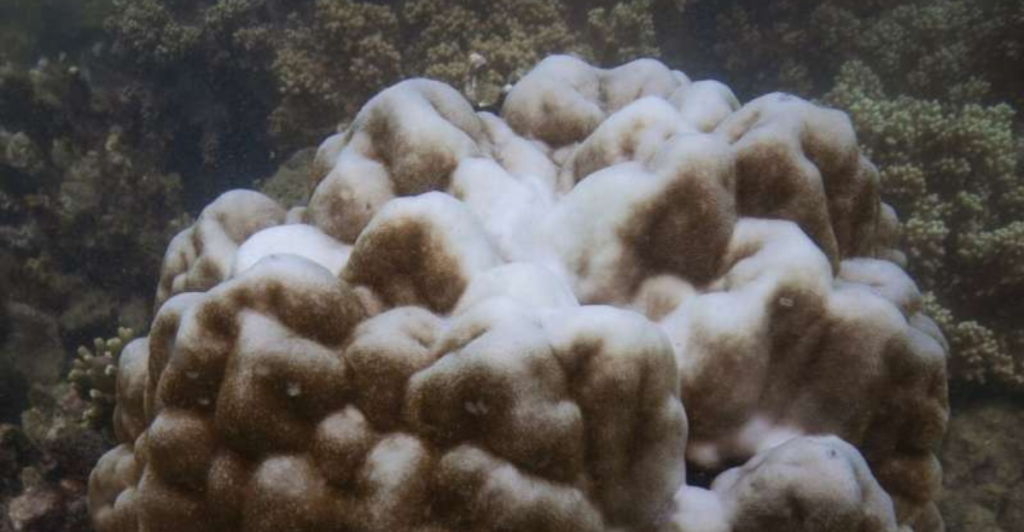
Beyond rising temperatures, coral reefs face compounding stressors that accelerate their decline. Nutrient pollution from agricultural runoff and sewage discharges fuels harmful algal blooms, which smother corals and deplete oxygen. Overfishing disrupts ecological balance, allowing algae to overgrow reefs while removing herbivorous fish that maintain reef health. Coastal development introduces sediment and contaminants, reducing water clarity and introducing pathogens linked to coral diseases like black band disease.
Ocean acidification, driven by CO₂ absorption, weakens coral skeletons by limiting calcium carbonate availability, while plastic pollution introduces toxins and abrasives that damage reef structures. All these factors combined cause coral reefs to weaken and eventually start bleaching.
Efforts to Save These Reefs
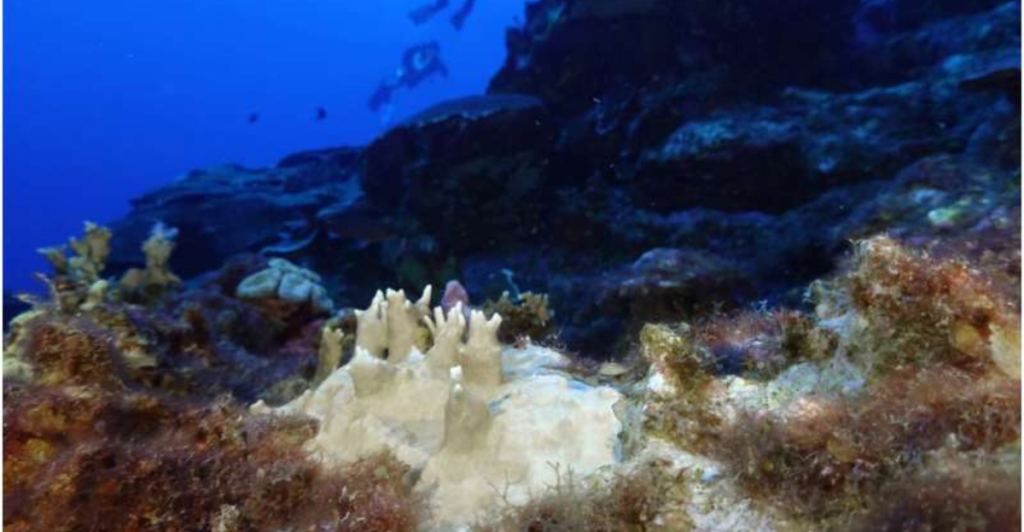
Global and local initiatives are mobilizing to combat coral reef decline through multifaceted conservation strategies. The Great Barrier Reef Marine Park Authority enforces zoning plans that restrict harmful activities in sensitive areas, while partnerships with Traditional Owners integrate Indigenous knowledge into ecosystem management. Organizations like the Great Barrier Reef Foundation fund coral restoration projects, including larval reseeding and resilient coral breeding, alongside community-led efforts to replant mangroves and seagrass beds.
“This research is a wake-up call for policymakers and conservationists. The resilience of coral reefs is being tested like never before, and we must prioritize strategies that enhance their ability to withstand climate change. Our findings underscore the need for immediate and effective management interventions to safeguard these ecosystems.”
Explore more of our trending stories and hit Follow to keep them coming to your feed!

Don’t miss out on more stories like this! Hit the Follow button at the top of this article to stay updated with the latest news. Share your thoughts in the comments—we’d love to hear from you!







